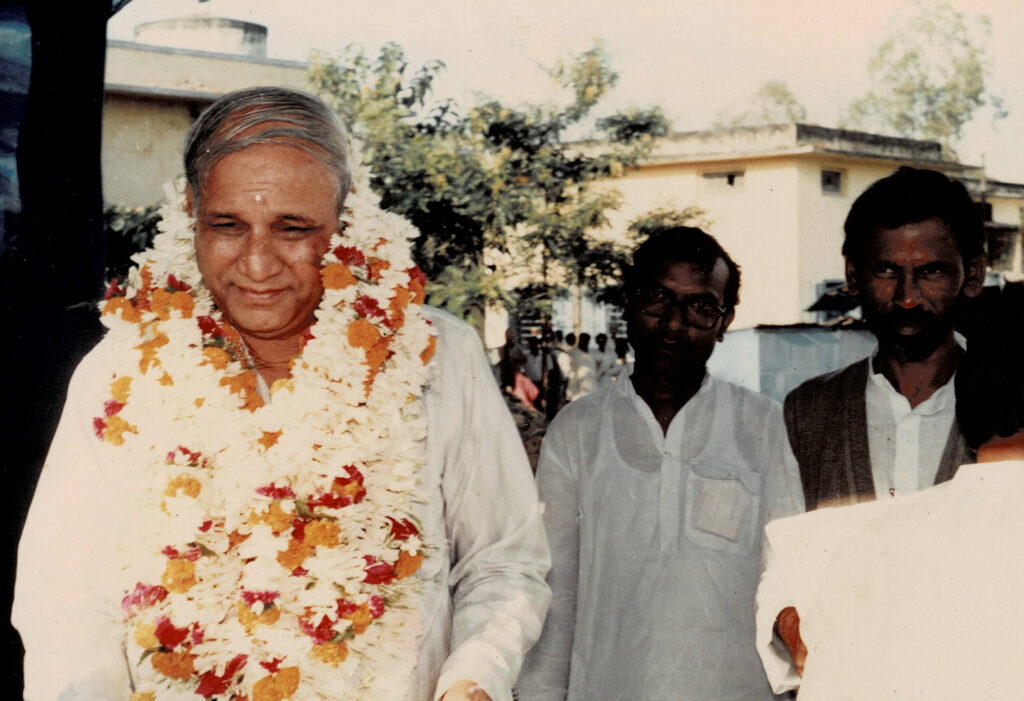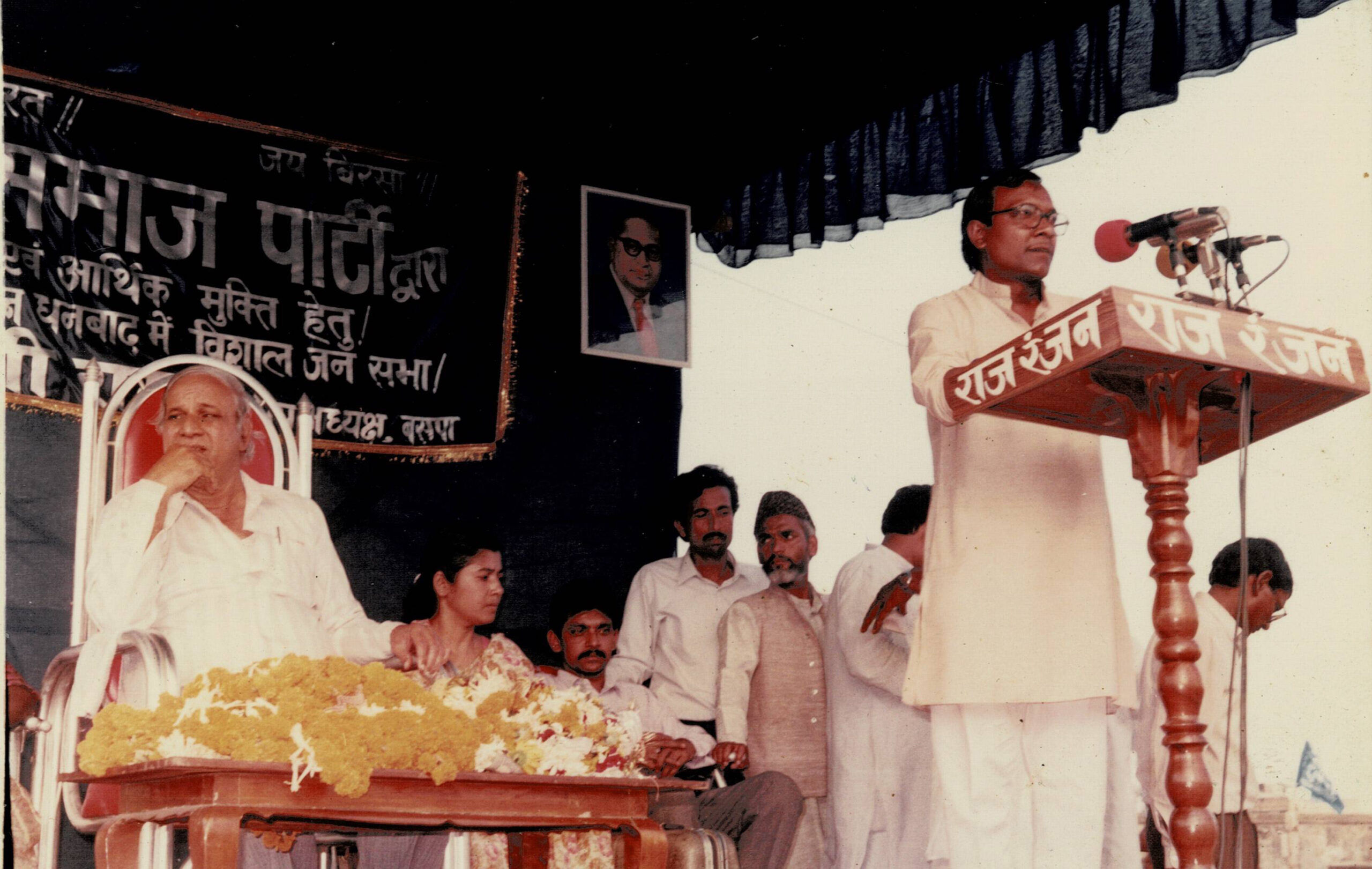While the political influence of the BSP may be waning, it’s crucial to recognize that the Bahujan movement perseveres. Kanshi Ram Jayanti serves as a poignant reminder that the anti-caste revolution remains vibrant within the masses.

“Kanshi Ram Jayanti: Unveiling the Cultural Essence of the Bahujan Movement”
Kanshi Ram, an influential leader in the Bahujan community, firmly believed that a society’s political success hinges on the strength of its non-political roots. While recent setbacks may overshadow the Bahujan Samaj Party’s (BSP) political standing, it would be a significant oversight to perceive Kanshi Ram’s Bahujan revolution solely through a political lens.
At the core of Kanshi Ram’s meetings and mobilizations lay a deep commitment to cultural revival. His Hegelian approach aimed at elevating rational consciousness among Bahujans was evident in his endeavors to challenge Brahminism and promote anti-caste awareness through everyday practices. Therefore, the celebration of Kanshi Ram Jayanti on March 15 holds a special significance for those aligned with the Bahujan cause. It serves as a poignant reminder of the intertwined cultural and political history shared by the participants of the Bahujan movement that commenced in the 1980s.
This cultural re-imagination found expression in organizations like BAMCEF (All India Backward and Minority Communities Employees Federation), DS4 (Dalit Shoshit Samaj Sangharsh Samiti), and BRC (Buddhist Research Center).
Cultural Pillars of the Bahujan Movement: Unveiling the Legacy of BAMCEF, DS4, and BRC”
The Bahujan movement, spearheaded by Kanshi Ram, stands on three significant cultural pillars – BAMCEF, DS4, and BRC. In a revealing interview, Kanshi Ram emphasized their pivotal role, distinct from the political aspirations of the Bahujan Samaj Party (BSP).
BAMCEF: Nurturing Thought Diversity and Anti-Caste Consciousness
BAMCEF’s manifesto envisioned a literary wing to unite diverse thought processes within the Bahujan community. This engagement with Bahujan literary tradition aimed at unraveling social history and the experiential reality of the community. Jagriti Jatha, as proposed in the manifesto, sought to elevate anti-caste consciousness among Bahujans. BAMCEF meetings were more than political gatherings – they embraced cultural presentations, including posters, musical performances, and poetry recitations. The early BAMCEF meetings, such as the one in Delhi’s Shahdara in 1980 themed “Chalta Firta Ambedkar Mela,” showcased the carnivalesque spirit, weaving together individual and collective memories of the Bahujan masses.
Harvinder Kaur and Taranum Baudh, associated with BAMCEF from a young age, vividly recall their participation, emphasizing the lasting impact of cultural engagement initiated by Kanshi Ram.
DS4: Empowering Students, Youth, and Women in the Anti-Caste Struggle
Launched on December 6, 1981, the Dalit Shoshit Samaj Sangharsh Samiti (DS4) focused on the struggles of students, youth, and women within the Bahujan community. Kanshi Ram initiated DS4 to provide a platform for Bahujans to share their anti-caste consciousness. DS4, with its cultural emphasis, aimed at organizing 85 percent of Bahujan voters, preparing them for political leadership roles.
BRC: Promoting Buddhism and Cultural Awareness
The Buddhist Research Centre (BRC), established by Kanshi Ram, embraced Buddhism. Kanshi Ram’s vision included mass conversion to Buddhism, announced in 2003, marking the golden jubilee of Ambedkar’s conversion. Post Kanshi Ram’s demise in 2006, his vision for mass conversion and cultural initiatives was not actively pursued by Mayawati and the BSP. The cultural artists and singers associated with BRC have faced obscurity in the absence of political support. Despite Kanshi Ram’s unfulfilled vision, the importance of cultural assertion to break casteist Brahminical practices remains a testament to his holistic approach.
Contemporary Cultural Practices and Kanshi Ram’s Legacy
In north India, the modern anti-caste struggle traces its roots to figures like Swami Achyutananda, B.A. Santram, Chandrika Prasad Jigyasu, Jagdeo Prasad, Lalai Singh Yadav, and Mangu Ram. Kanshi Ram, a bottom-up leader, connected dynamically with the masses, particularly Bahujan women. He played a crucial role in reviving socio-cultural icons, paying homage to them every March 15 during Kanshi Ram Jayanti. The annual carnival, a gathering of various groups, serves as a space for anti-caste imagination through discussions, cultural performances, prints, pamphlets, and marches.
Kanshi Ram Jayanti signifies an anti-caste worldview, commemorating Saheb’s struggle for political consciousness and the eradication of caste practices. The Bahujan movement’s cultural roots, enriched through the celebration of Bahujan icons and musical re-imagination, remain deeply ingrained. The music industry, publication houses like Samyak Prakashan, and efforts by activists contribute to the ongoing cultural legacy of Kanshi Ram. Despite recent political challenges, the Bahujan movement’s resilience and potential for resurgence lie in the emotional attachment fostered through cultural engagement – a unique aspect of Kanshi Ram’s leadership in India’s socio-political landscape.



